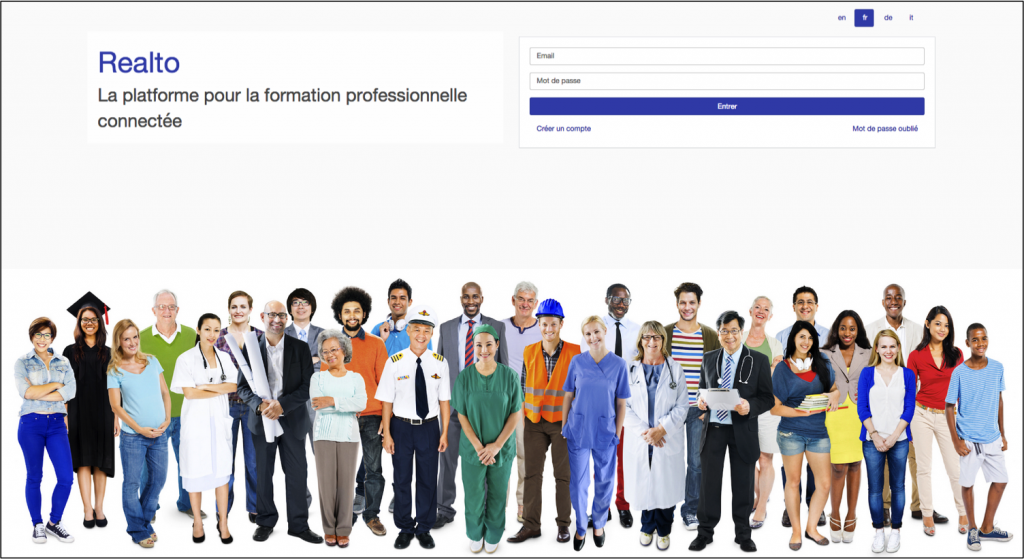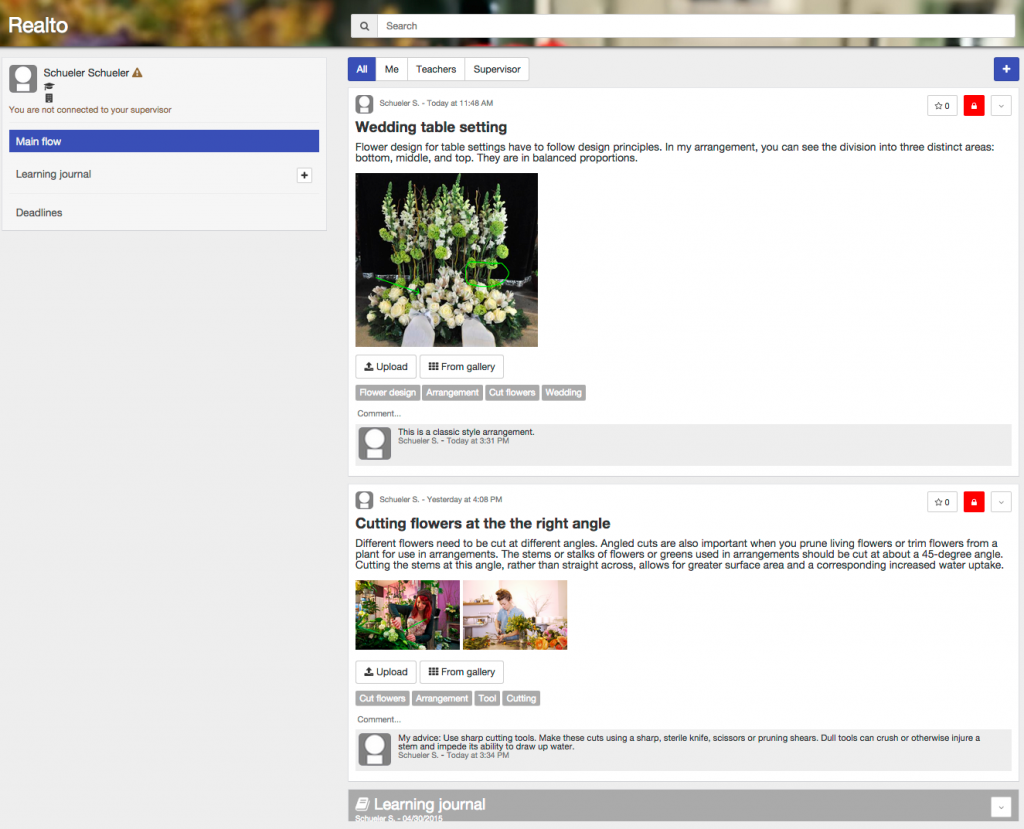
The Swiss vocational education system consists of three different learning contexts: workplace, vocational school and inter-company courses. In each context, learners experience different forms of knowledge.
The multi-context model reflects the view of the Swiss VET system of teaching both theoretical and practical knowledge. However, as a result of the separation of the different contexts, knowledge is often situated in one of these contexts and does not get used in the other context. The multi-context approach often leads to disconnected, inert, and fragmented knowledge that cannot be applied to solve problems.

The Leading House DUAL-T develops and implements an online learning platform, REALTO, that aims to bridge between different VET contexts towards more integrated knowledge (see Figure 1). REALTO is a versatile platform that can be adapted to the specific needs of different professions and user groups. REALTO is being developed in an iterative co-design process with professional associations, teachers, supervisors, learners, and researchers [See the desktop version of REALTO here]. The development of REALTO is based on the pedagogical model ‘Erfahrraum’, which describes the processes leading a shared digital space that bridges physical contexts (Schwendimann et al., 2015).
In REALTO, learners use mobile applications to capture learning experiences through photos, videos, audio, and texts in the workplace [The mobile apps are available for free: Android or iOS]. Selected experiences can be shared with peers, teachers, and supervisors while other entries can be kept private.

Entries in REALTO are shown in a chronological timeline (see Figure 2). Each entry can be enhanced with a title, description, tags, and comments. Photos can be annotated to highlight important features.
Time for reflection is often limited in the workplace. REALTO allows learners to quickly capture experiences and use them for later reflection activities. Learners can use their REALTO entries to compose formal learning journal entries. Learning journal entries can be shared with supervisors who evaluate and validate the documents.
REALTO aims to bridge the gap between school and workplace learning contexts in both directions. From the school to workplace contexts, theoretical knowledge can become more understandable and relevant by connecting it to specific examples of workplace experiences. From the workplace to school context, experiences made in the workplace can be used for reflective activities to build connections to knowledge learned in the school context. Teachers can assign activities, for example to collect photos in the workplace about a certain topic that will be discussed later in school. Learner generated entries can be used as practical examples to illustrate abstract concepts.
Embed of video is only possible from Mediaspace, Vimeo or Youtube
Reference: Schwendimann, B. A., Cattaneo, A. A. P., Dehler Zufferey, J., Gurtner, J. -L., Bétrancourt, M., & Dillenbourg, P. (2015). The ‘Erfahrraum’: A pedagogical model for designing educational technologies in dual vocational systems. Journal of Vocational Education and Training (JVET)